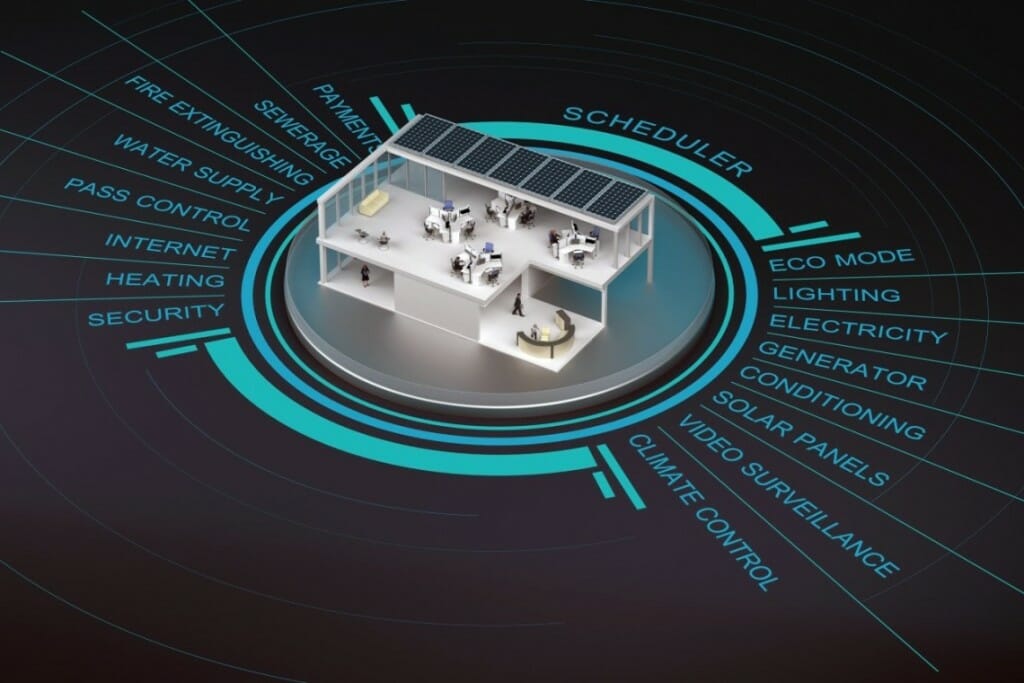Smart Spaces – The Phygital World ATMECS – Content Team A smart space is a physical or virtual environment; it provides an increasingly open, linked, integrated, and cognitive ecosystem where humans and technology-enabled systems interact in a smart area. “Smart cities”, “digital workplaces,” “smart settings,” and “ambient intelligence” are some of the several terms for smart spaces. Automated tools, invoicing, and preventive maintenance for premise infrastructure, are a few common applications. Smart spaces alter how individuals engage with one another and impact diverse locations’ decision support systems (e.g., buildings, industries, and venues). COVID-19 accelerated the commercial acceptance of smart spaces as de facto rules for employee safety and social isolation emerged. We will see more chances to deliver more connected, coordinated, and intelligent solutions throughout target settings as enterprises embrace the capacity of smart spaces to integrate legacy systems with new technologies like IoT, AI etc. Smart spaces target a considerable mass, as they have a comprehensive, cross-industry appeal and may be used wherever monitoring and controlling individuals or managing mobile traffic is necessary. Benefits provided by smart spaces for businesses: Environmental advantages and financial savings: By adjusting heating, cooling, and lighting in real-time in response to weather changes and building occupancy, smart spaces lower energy expenditures. Smart spaces decrease greenhouse emissions, save money, and can be controlled or monitored remotely. Risk reduction: Smart spaces’ surveillance and wireless connectivity characteristics enable managers to identify issues early and frequently assist in preventing them from occurring. Smart spaces may lower the cost of maintenance and annoyance to residents/occupants by predicting or discovering early signals of issues in the physical facilities and infrastructure. A safer, more intelligent environment for work and play: Security and surveillance systems in smart spaces make it safer for people living and working there, enhancing visitors’ experience. Through sensor warnings for the presence of (for example) housework or workout equipment, smart rooms can provide convenience. Rapid screening and testing during the pandemic for fans returning to stadiums is an example application. Face recognition, RFIDs and Biometrics technologies have contributed to larger acceptance and viable use cases. Advantages of smart space to individuals: Every quantifiable aspect of efficiency is improved in every area by smart space technology. Smart technology often focuses on lowering the overall operational expenses of buildings by avoiding resource and utility waste. Meters for electricity or water may readily be equipped with sensors, making them prime candidates for smart monitoring. In places with risks of danger or accidents, smart spaces promote safety and risk reduction. Smart technology, such as intelligent robots in industrial applications, can replace human employees doing dangerous activities. Productivity has grown by replacing humans with these robots in tedious and repetitive jobs like shifting inventory palettes. Smart environments improve user experience since previous smart technology applications have eliminated many “clerical” duties we perform daily, such as checking lights. Adopting smart space technology is now driven by the need to enhance occupants’ experience. Physical buildings are becoming more collaborative, informative, and effective thanks to smart office technology connecting remote employees, smart conference rooms, scheduling systems, and sensors covering every facility component. Some manufacturers advertise a sizable central wall display that serves as a focal point for company activities and shows real-time information. For example, a hospital may use this display to highlight which physicians are present, which surgeries are planned, or which rooms are occupied. Which technologies are applied to produce Smart space? A widely used framework categorizes smart spaces into three distinct environments that interact as one: a digital computing environment, the physical setting, and the human environment layer. Digital Computing Environment: This layer gives smart devices access to private network services or the internet, which enables them to connect to other components of the decentralized systems that run the smart space environment. Technologies here may include but not limited to: AI, Computer vision, Speech Recognition, Block Chain, Distributed systems, 5G Wireless Connectivity. Physical Environment: The most diverse layer of smart spaces is the physical environment layer, which contains motion & proximity sensors, climate sensors (concerned with temperature, humidity, and pressure), accelerometers, magnetometers & gyroscopic sensors, gas & level sensors, RFID tagging, microprocessors etc. Human-environment layer: this includes devices that individuals carry with them, such as cellphones, smart wearable devices, and intrinsic smart devices like pacemakers. Different kinds of smart spaces include: Smart houses: Smart homes connect several household appliances and home systems, enhancing our living spaces’ efficiency and comfort. Smart buildings/venues: Smart buildings incorporate many characteristics of smart houses, including monitoring lighting, heating, cooling, security, access, parking areas, hydro and electricity meters, fire alarm systems, boilers, seating, roofing, and elevators etc. Smart industries: The networked smart factory has evolved into a smart space, a digital supply network where several factories and suppliers are interlinked. Smaller units may make choices based on system-wide data. Smart cities: For governance, smart cities are metropolitan regions supplied with smart space technology. Smart Stadiums: From crowd management to personalized concierge services, from 5G connectivity to instant replay notifications, smart stadiums like SoFi stadium in Los Angeles, CA are redefining the sports and entertainment experience. In Conclusion At ATMECS, we believe smart spaces offer tremendous opportunities for technological innovation and practical applications. As Bill Gates once said “The advance of technology is based on making it fit in so that you don’t really even notice it, so it’s part of everyday life.” Smart spaces are one such aspect of tech advancement where it infuses seamlessly with everyday life.




